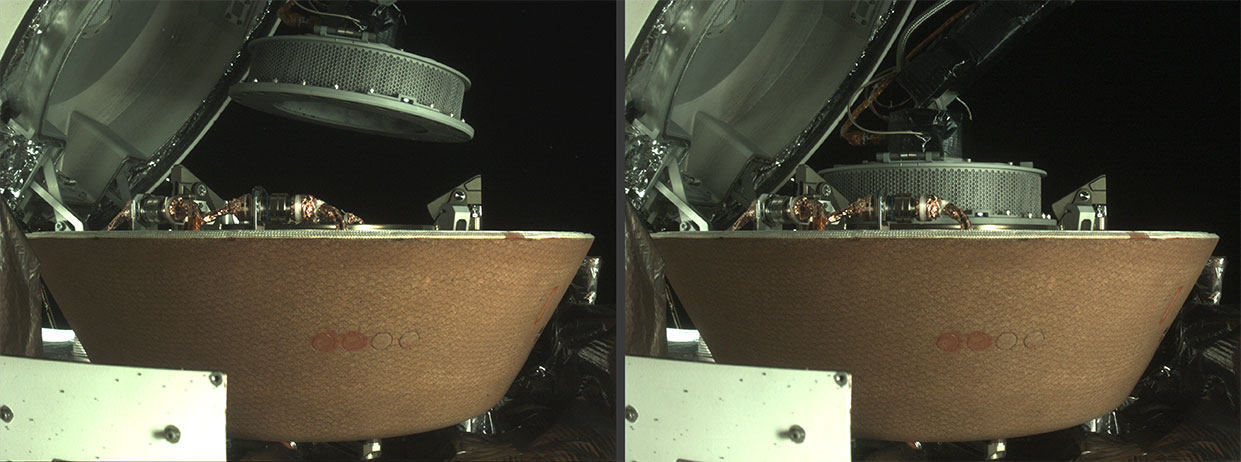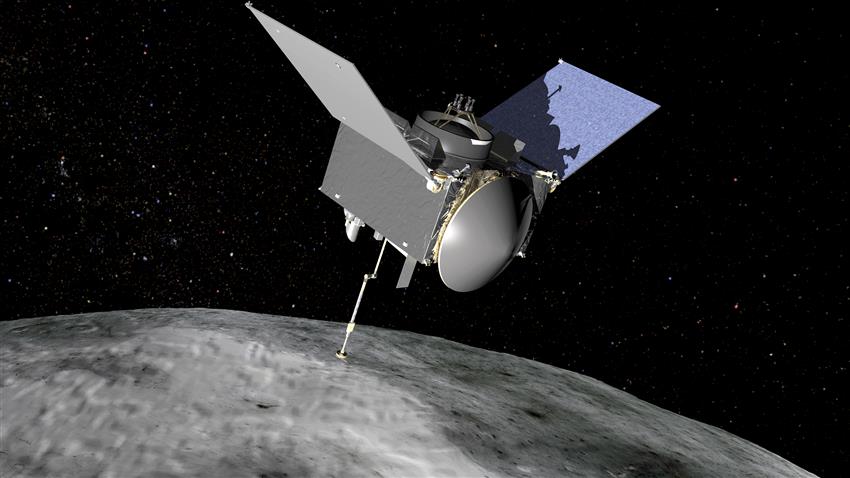OSIRIS-REx spacecraft collects significant sample from asteroid Bennu
This series of 82 images was captured on during the OSIRIS-REx mission's TAG sample collection event. It shows the SamCam imager's field of view as the NASA spacecraft approaches and touches down on asteroid Bennu, at sample site Nightingale. The team on Earth received confirmation of successful touchdown at 6:08 p.m. EDT. Preliminary data shows the sampling head touched Bennu's surface for approximately six seconds, after which the spacecraft performed a back-away burn. (Credit: NASA)
Two days after touching down on asteroid Bennu on , NASA's OSIRIS-REx mission team received images that indicate the spacecraft collected more than enough material to meet one of its main mission requirements – acquiring at least 60 grams of the asteroid's surface material.
The spacecraft captured images of the sample collector head as it moved through several different positions. While reviewing those images, the OSIRIS-REx team noticed both that the head appeared to be full of asteroid particles, and that some of those particles appeared to be escaping slowly from the sample collector. They suspected that bits of material were passing through small gaps where a mylar flap – the collector's "lid
" – was slightly wedged open by larger rocks.
To minimize loss and preserve the remaining material, the OSIRIS-REx team decided to stow the sample as quickly as possible. Doing so meant that the originally planned tests to measure the mass of the collected sample were cancelled.
After a successful stowing procedure, the sample is now in the Sample Return Capsule (SRC), where any loose material will be kept safe during the spacecraft's journey back to Earth. The OSIRIS-REx spacecraft remains in excellent health and is scheduled to return to Earth in .
The Canadian Space Agency (CSA) contributed the OSIRIS-REx Laser Altimeter (OLA) to the mission, a laser system able to scan the asteroid from up to seven kilometres away. Thanks to Canadian technical and scientific expertise, the instrument was used to scan the asteroid's surface to create high-resolution 3D maps that were crucial to help mission scientists select the best sample site. The CSA's contribution to the mission will allow Canada to receive a portion of the asteroid material.

The left image shows the OSIRIS-REx collector head hovering over the SRC after the Touch-And-Go Sample Acquisition Mechanism (TAGSAM) arm moved it into the proper position for capture. The right image shows the collector head secured onto the capture ring in the SRC. Both images were captured by the StowCam camera. (Credits: NASA/Goddard/Université de l'Arizona/Lockheed Martin)



